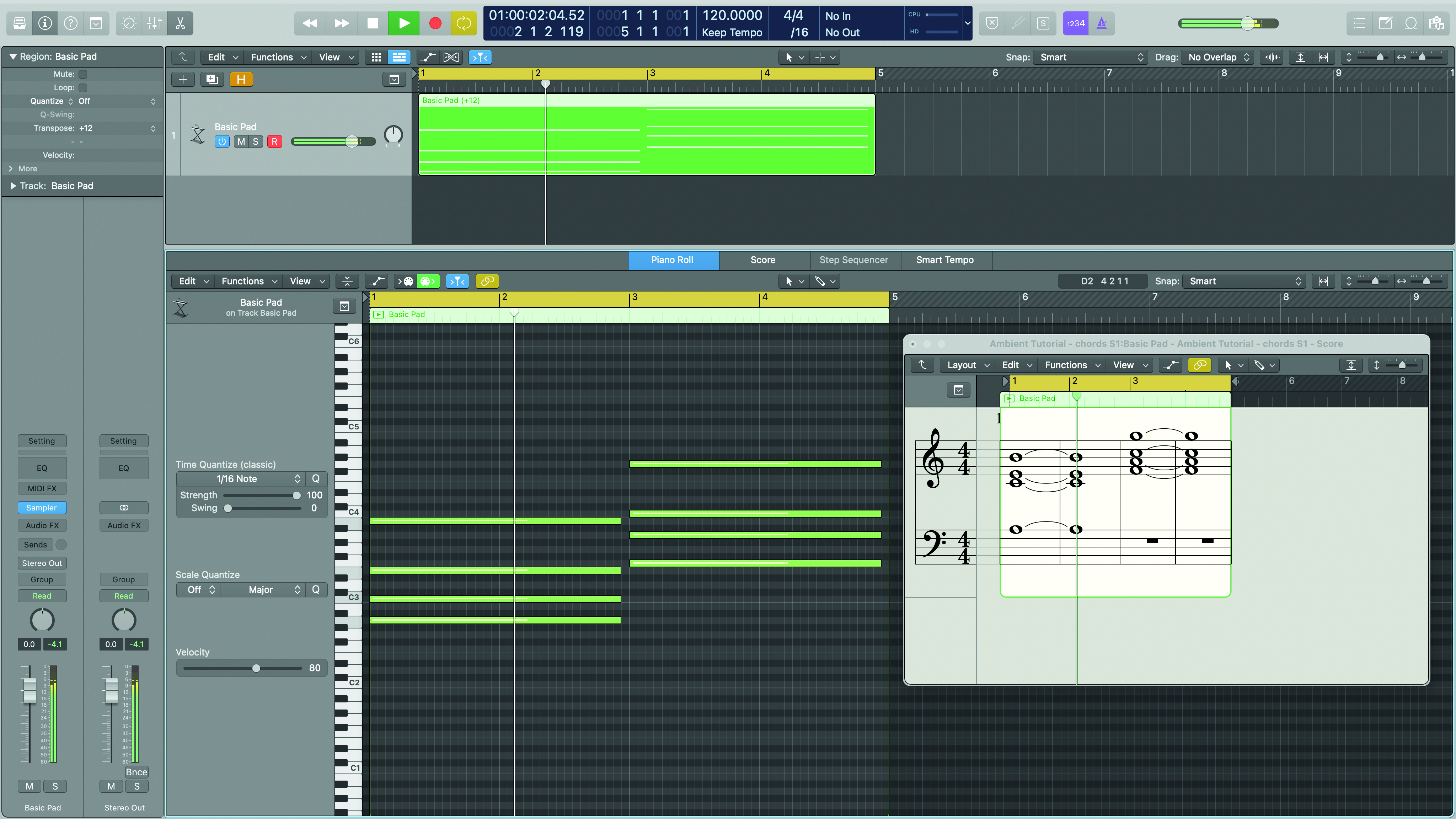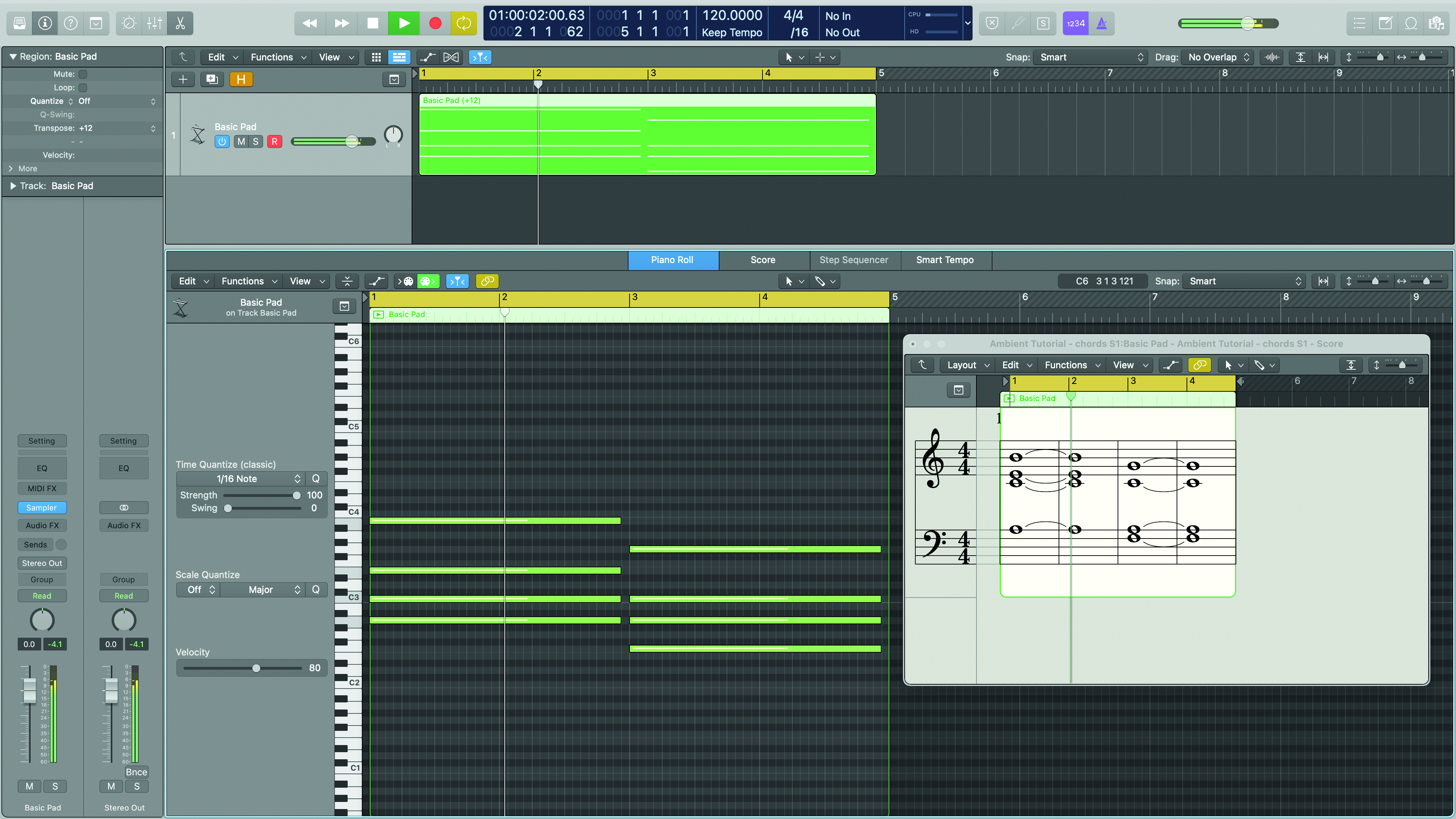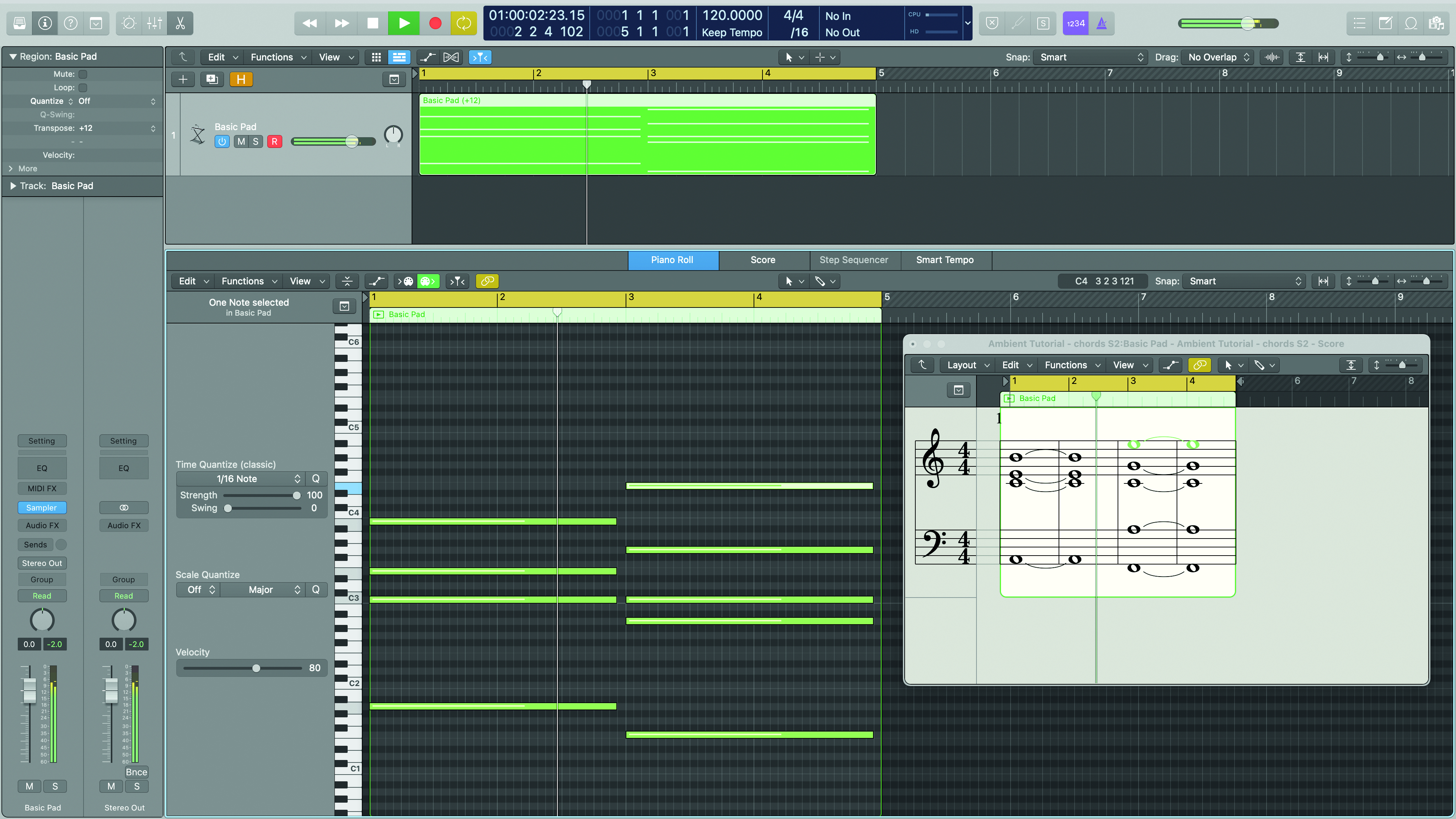How to create a lush ambient chord progression
In this tutorial we show you how to write a harmonically engaging four-chord cycle for use in ambient soundscapes
When creating a drone sound we often play a single note. This allows us to focus on the specifics of that evolving sound. Here we’re going to move away from the drone effect and introduce some harmonic interest whilst maintaining the ambient feel.
We do this by some nifty use of extended chords and also by avoiding chords that want to resolve (a dominant 7th for example), thus creating a sense of continuity. We’ll start with just a couple of chords and then move onto a four-chord cycle, looking at how best to move from one chord to the next.

Step 1: Using just two chords, we can create some interest but also create a sense of continuation. Extended chords are great for this. In the key of A minor, we’ve programmed two extended chords, two bars each. Am9 followed by Fmaj9, and for each we’ve left out the 7th.

Step 2: The transition between chords is not smooth. To improve this, we want to move each note as little as possible – voice leading. If we shift the second chord down an octave you’ll now see the A and C notes move smoothly to the second chord.

Step 3: Finally, we can finesse the chord further by spreading the chord voicing. Start by shifting the root notes down an octave. Then for the second chord we can add another note on top. We quite like adding the E as it lifts the second chord.

Step 4: Let’s extend the two chords to four, for a more engaging cycle. For our third chord, let’s stick with the extended chords, and try an 11th on the 4th scale degree – Dm11. This is a six-note chord, but we can safely omit the 9th.

Step 5: Once again, to achieve a smooth transition from the previous chord, let’s change the voicing. Here we’ve moved the root D an octave lower and also moved the A and C from the chord down to create continuity from the previous chord.
Want all the hottest music and gear news, reviews, deals, features and more, direct to your inbox? Sign up here.

Step 6: Our final chord is a Gadd2. Just like G9 this includes an A but not as an extension above the octave. As before, we’ve moved the root down an octave. Finally, moving the fifth (D) up an octave creates a better fit with the previous chord.
Future Music is the number one magazine for today's producers. Packed with technique and technology we'll help you make great new music. All-access artist interviews, in-depth gear reviews, essential production tutorials and much more. Every marvellous monthly edition features reliable reviews of the latest and greatest hardware and software technology and techniques, unparalleled advice, in-depth interviews, sensational free samples and so much more to improve the experience and outcome of your music-making.
